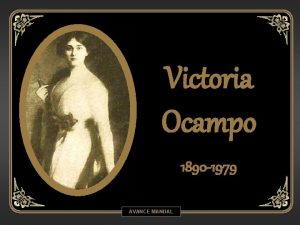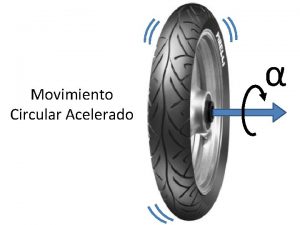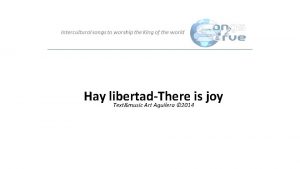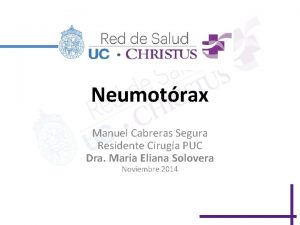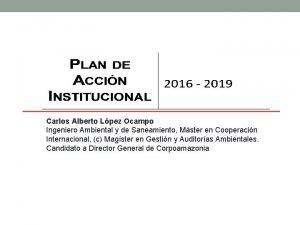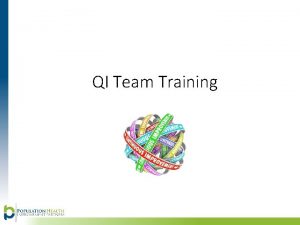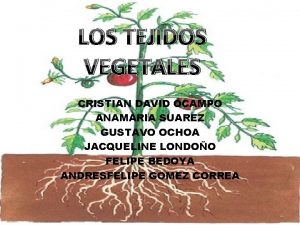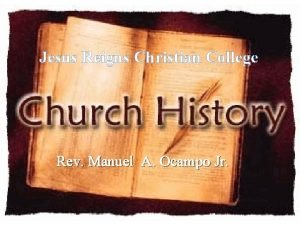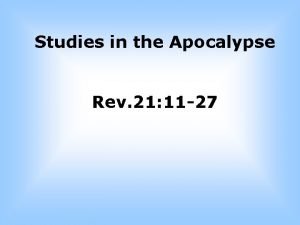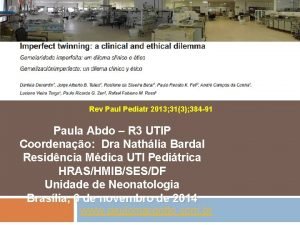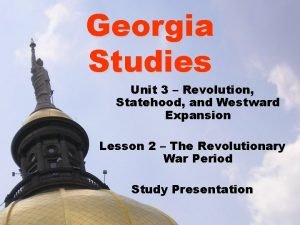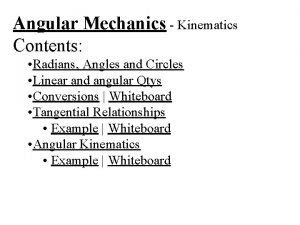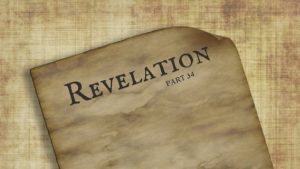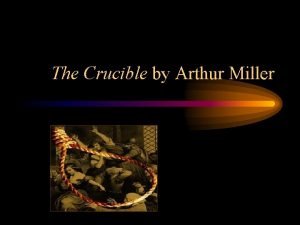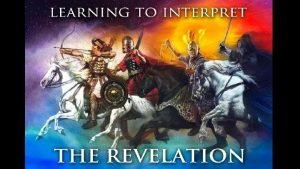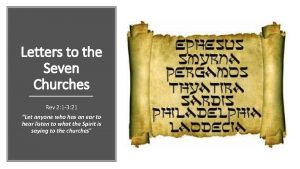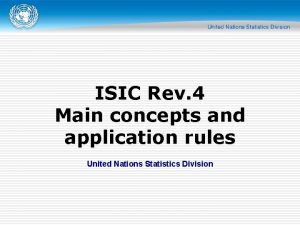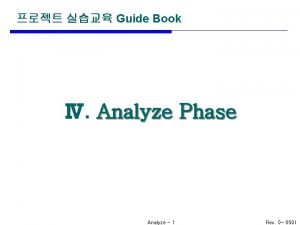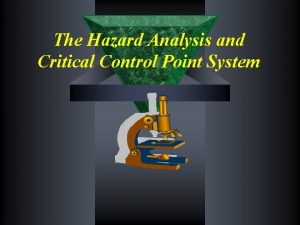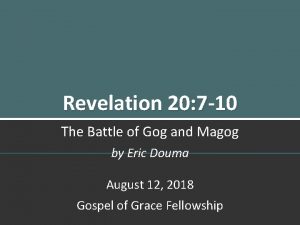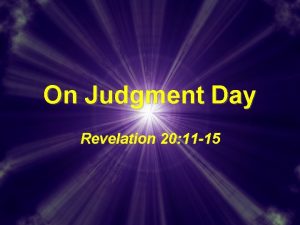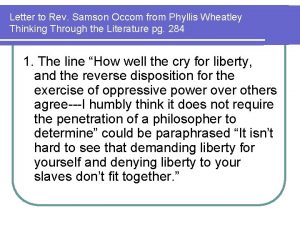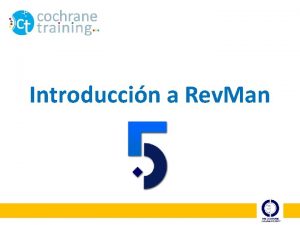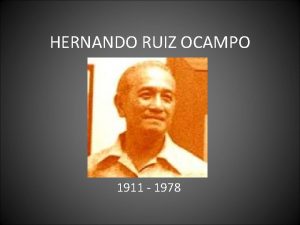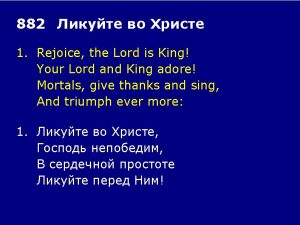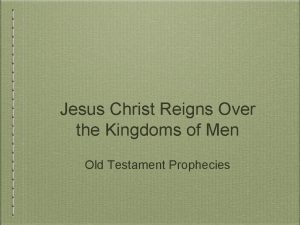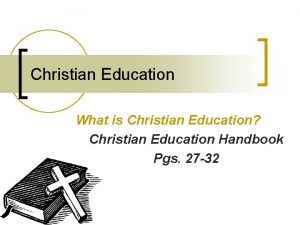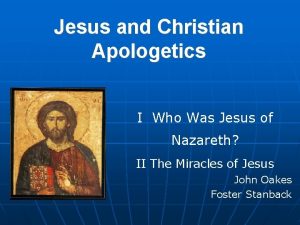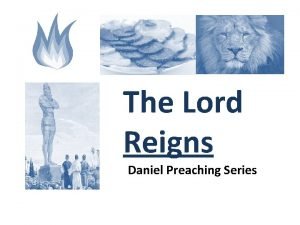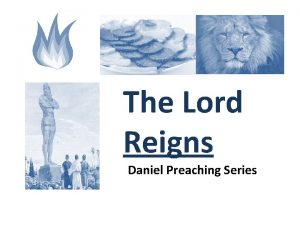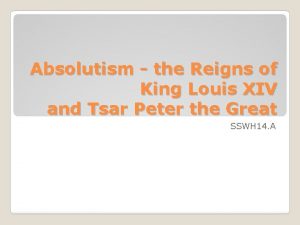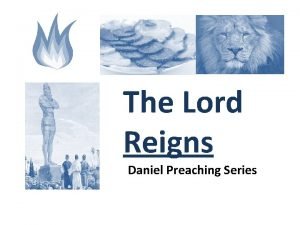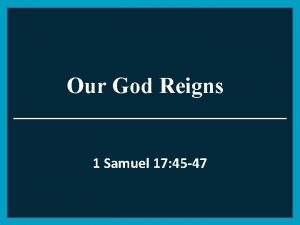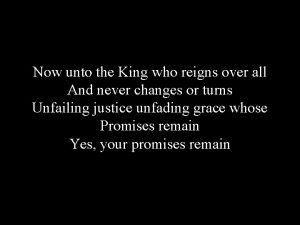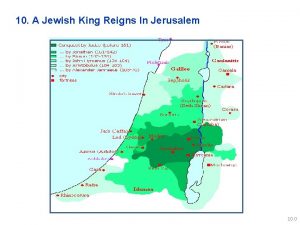Jesus Reigns Christian College Rev Manuel A Ocampo



















































- Slides: 51

Jesus Reigns Christian College Rev. Manuel A. Ocampo Jr.

What is History?





Working definition


Division of Church History YEARS PERIOD EMPHASIS 0 – 590 The Early Church Establishment 591 – 1517 The Middle Ages Decay The Modern Era Reformation and Revival 1517 – Present

Sub -Division of Church History PERIOD YEARS ERAS The Patristic Period 01 – 100 Apostolic Christianity 101 -312 The struggle of the Early Church to survive 312 – 590 The Age of the Christian Roman Empire 590 – 1054 Byzantine Christianity 1054 – 1305 The Supremacy of the Papacy 1305 – 1517 The Eve of the Reformation 1517 – 1648 The Age of the Reformation 1648 – 1789 The Age of Reason and Revival 1789 – 1914 Revivals and Missions 1914 – Present The Age of Ideologies The Middle Ages Modern Era

The historicity of Jesus Christ of Nazareth

The Eye Witnesses Accounts

Luke 1: 1 -5 “Many have undertaken to draw up an account of the things that have been fulfilled among us, 2 just as they were handed down to us by those who from the first were eyewitnesses and servants of the word. 3 Therefore, since I myself have carefully investigated everything from the beginning, it seemed good also to me to write an orderly account for you, most excellent Theophilus, 4 so that you may know the certainty of the things you have been taught. 5 In the time of Herod king of Judea …”

Luke 2: 1 -3 “In those days Caesar Augustus issued a decree that a census should be taken of the entire Roman world. 2 (This was the first census that took place while Quirinius was governor of Syria. ) 3 And everyone went to his own to register. ”

Luke 3: 1 -2 “In the fifteenth year of the reign of Tiberius Caesar — when Pontius Pilate was governor of Judea, Herod tetrarch of Galilee, his brother Philip tetrarch of Iturea and Traconitis, and Lysanias tetrarch of Abilene — 2 during the high priesthood of Annas and Caiaphas, the word of God came to John son of Zechariah in the desert. ”

Mark 15: 1 “Very early in the morning, the chief priests, with the elders, the teachers of the law and the whole Sanhedrin, reached a decision. They bound Jesus, led him away and handed him over to Pilate. ”

Secular Writers

Tacitus (b. 56 or 57 A. D. ), the renowned Roman historian and statesman, writes: “Nero fabricated scapegoats—and punished with every refinement the notoriously depraved Christians (as they were popularly called). Their originator, Christ, had been executed in Tiberius’ reign by the governor of Judea, Pontius Pilatus. But in spite of this temporary setback the deadly superstition had broken out afresh, not only in Judea (where the mischief had started) but even in Rome. All degraded and shameful practices collect and flourish in the capital …” (Annals, XV, 44).

Although some dispute either the authenticity or the precise meaning of the passage, Josephus records another important early reference to Christ. In the context of a discussion concerning the career of Pontius Pilate, Josephus adds this aside: “Now, there was about this time Jesus, a wise man, if it be lawful to call him a man, for he was a doer of wonderful works—a teacher … He was [the] Christ; and when Pilate, at the suggestion of the principal men among us, had condemned him to the cross, those that loved him at the first did not forsake him, for he appeared to them alive again the third day, as the divine prophets had foretold these and ten thousand other wonderful things concerning him; and the tribe of Christians, so named from him, are not extinct at this day” (Antiquities, 18. 3. 3).

Christian faith is rooted in history §

Historical settings and backgrounds

Galatians 4: 4 “But in the fullness of time, God sent forth His Son, born of a woman, born under the law…”

The Greco-Roman World

Major Aspects

Palestine in New Testament Times

Under the Roman Empire

Kingdom divided after Herod the Great among his sons


Principal people groups

The Pharisees

The Sadducees

The Zealots

The Essenes

“The People of the Land”

The Diaspora Judaism § Before the birth of Christ, there were many Jews living outside Jerusalem but with great attachment to the land of their ancestors. They are called “Diaspora” or “Dispersion. ”

One of the main contributions of the Diaspora Judaism is the translation of the Old Testament to Greek known as the Septuagint (usually abbreviated as LXX). This Greek translation of the OT was used by the early Christians in spreading the Gospel to the Gentiles.

Growth of the Church in the time of the Apostles

§ Their response to a global mission (Matt. 28: 18 -20; Acts 1: 8) § Gospel Spreads through Jerusalem to Jews (Acts 2 -6) § Stephen’s martyrdom Scatters Witnesses (Acts 7) § Ministry of Peter (Acts 2 -6, 10 -11, 15) § Ministry of Philip (Acts 8) – Samaritans, Ethiopian Eunuch, up Mediterranean coast to Caesarea § Ministry of Paul (Acts 9, 13 -28)

Key Distinguishing Features of the Apostolic Church • The Experience of Miraculous Works • Uniting of Jew and Gentile in the Saving Purposes of God • One Universal Church in Local Settings • Simplistic, Informally Structured Worship – Location of Worship (Jas 2: 2; 70 AD) – Elements of Worship • • • Lord’s Supper and Agape Meal Reading of Scriptures (1 Tim 3: 15; 4: 13) The Exhortation (1 Tim 4: 13) The Teaching (1 Tim 4: 13) Singing (Eph 5: 19 -20; Col 3: 16) The Prayers (Acts 2: 42; 1 Tim 2: 1 -2, 8; 3: 14 -15)

Key Distinguishing Features of the Apostolic Church (cont) • “Family Model” of Church Government – Overseers/Elders (1 Cor 4: 14 -15; 2 Cor 11: 2, 28; Phil 1: 1; 1 Thess 2: 7 -12; 1 Tim 3: 1 -7; Titus 1: 5 -9) – Deacons (Phil 1: 1; 1 Tim 3: 8 -12) – Family Love • Evangelistic Zeal • Persecution – Waves of imperial persecutions – from Nero (r. 54 -68), – Tradition claims 10 of original 12 disciples were martyred (2 Tim 3: 12)

Place of ministry and means of death of principal Apostles


NAME SIMON PETER ANDREW PLACE OF TRADITIONAL MINISTRY MEANS AND PLACE OF DEATH Tradition states he may have visited Britain and Gaul Crucified upside down in Rome during persecution of Nero (64 -68 AD) he felt unworthy to die on a cross in the same manner as Jesus. This explanation of his death can be traced back to the third century writer Origen. Preached in Scythia(Ukraine and Southern Russia) Asia Minor and Greece Crucified on an X shaped cross at Patras in Achaia, before being crucified he was severely whipped, after being laid on the cross he continued to preach to his Executioners till he expired two days later. Later tradition suggests the cross was in spread eagle position (hence St Andrews Cross)

NAME PLACE OF TRADITIONAL MINISTRY MEANS AND PLACE OF DEATH Executed by Herod Agrippa I in 44 AD (Acts 12: 2) JAMES, SON OF ZEBEDEE JOHN Died natural death c 100 A. D, after early in life being boiled in a huge Ministered at Ephesus, bowl of oil, and sentenced said to have rebuked early to mine prison on Patmos Gnostic Ceronthus Later freed at served as Bishop of Edessa in modern turkey. PHILIP Conflicting traditions place him in Ethiopia, Crucified in Hierapolis in Asia Minor

NAME PLACE OF TRADITIONAL MINISTRY MEANS AND PLACE OF DEATH MATTHEW Possibly Ethiopia Suffered Martyrdom in Ethiopia died by sword wound (Legendary explanation) THOMAS Preached in Babylon, Strong early tradition tells of his founding churches in India Martyred in India by being stabbed with a sphere/lance. C 72 AD Armenia (eastern Turkey, northern Iraq, north BARTHOLOMEW western Iran) may also have gone to Egypt and Ethiopia Martyred after ministry in Armenia flayed to Death by whip. (high degree of uncertainty)

NAME PLACE OF TRADITIONAL MINISTRY MEANS AND PLACE OF DEATH JAMES, SON OF ALPAEUS Possibly ministered in Egypt and Syria Thrown over a hundred foot drop from the southeast pinnacle of a temple when he refused to deny his faith in Christ. When his body was found he was still alive so his persecutors beat him to death by a fullers club c 62 AD THADDEUS Tradition associates his ministry with Assyria (eastern Iraq) and Persia (Iran) Beaten to death with club then beheaded in Persia towards end of first century SIMON THE ZEALOT Variously (and dubiously) associated with Persia, Egypt, Carthage and Britain No explanation

NAME PLACE OF TRADITIONAL MINISTRY Hanged Himself after betraying Jesus JUDAS ISCARIOT MATTIAS PAUL BARNABAS MEANS AND PLACE OF DEATH Possibly Ethiopia, Judea and Eastern Turkey Stoned and then beheaded at Cochis c 80 AD Traveled widely throughout Asia Minor Beheaded under the orders of Nero in 6467 A. D (as Roman citizen exempt crucifixion) Martyred at Salamias in c 61 AD

Spread of the Gospel

Spread of the Gospel Churches in 100 A. D.

Spread of the Gospel Churches in 200 A. D.

Spread of the Gospel Churches in 300 A. D.
 Victoria ocampo francisca ocampo
Victoria ocampo francisca ocampo Velocidad angular y tangencial
Velocidad angular y tangencial Jesus is the sweetest name i know
Jesus is the sweetest name i know Jesus in the morning
Jesus in the morning Our god is an awesome god he reigns
Our god is an awesome god he reigns Present joy
Present joy There is joy art aguilera
There is joy art aguilera There's a place where mercy reigns and never dies
There's a place where mercy reigns and never dies God of angel armies
God of angel armies It's the song of the redeemed
It's the song of the redeemed Manuel cabreras segura
Manuel cabreras segura Manuel jesus rivera 320 san juan
Manuel jesus rivera 320 san juan Ocampo grupo aduanal
Ocampo grupo aduanal Fis. juan velazquez torres
Fis. juan velazquez torres Cristian david ocampo
Cristian david ocampo Jorge alberto lópez ocampo
Jorge alberto lópez ocampo Dina ocampo
Dina ocampo Reading is an interactive process.
Reading is an interactive process. Hello my name is
Hello my name is Dina ocampo
Dina ocampo Cristian david ocampo
Cristian david ocampo Dina ocampo
Dina ocampo Southern hills christian college
Southern hills christian college Jesus you are my lord jesus you are my everything
Jesus you are my lord jesus you are my everything Se um hino cantar tu puderes
Se um hino cantar tu puderes Jesus jesus how i trust him
Jesus jesus how i trust him Kerygmatischer und historischer jesus
Kerygmatischer und historischer jesus Rev 21:27
Rev 21:27 Bever bæsj
Bever bæsj Rev paul pediatr
Rev paul pediatr Nstm 300 rev 10
Nstm 300 rev 10 Slová z hlbín dávnych vekov
Slová z hlbín dávnych vekov Unit 3 rev. statehood and westward expansion
Unit 3 rev. statehood and westward expansion Rev robotics blinkin
Rev robotics blinkin Rpm to rad/s
Rpm to rad/s Rev 22 nasb
Rev 22 nasb Ezekiel cheever personality traits
Ezekiel cheever personality traits Trafficked definition the crucible
Trafficked definition the crucible Revelation 1:3
Revelation 1:3 Remember the titans lineman
Remember the titans lineman Rev 21 16
Rev 21 16 Rev 2:1
Rev 2:1 Isic rev 4
Isic rev 4 Rev 0
Rev 0 Rev cafe haiti
Rev cafe haiti Piramida haccp
Piramida haccp Codex stan 1-1985, rev. 1-1991
Codex stan 1-1985, rev. 1-1991 Revelation 20:7-8
Revelation 20:7-8 Rev 20:15
Rev 20:15 Letter to the reverend samson occom
Letter to the reverend samson occom Rev man
Rev man Nat rev cancer
Nat rev cancer
